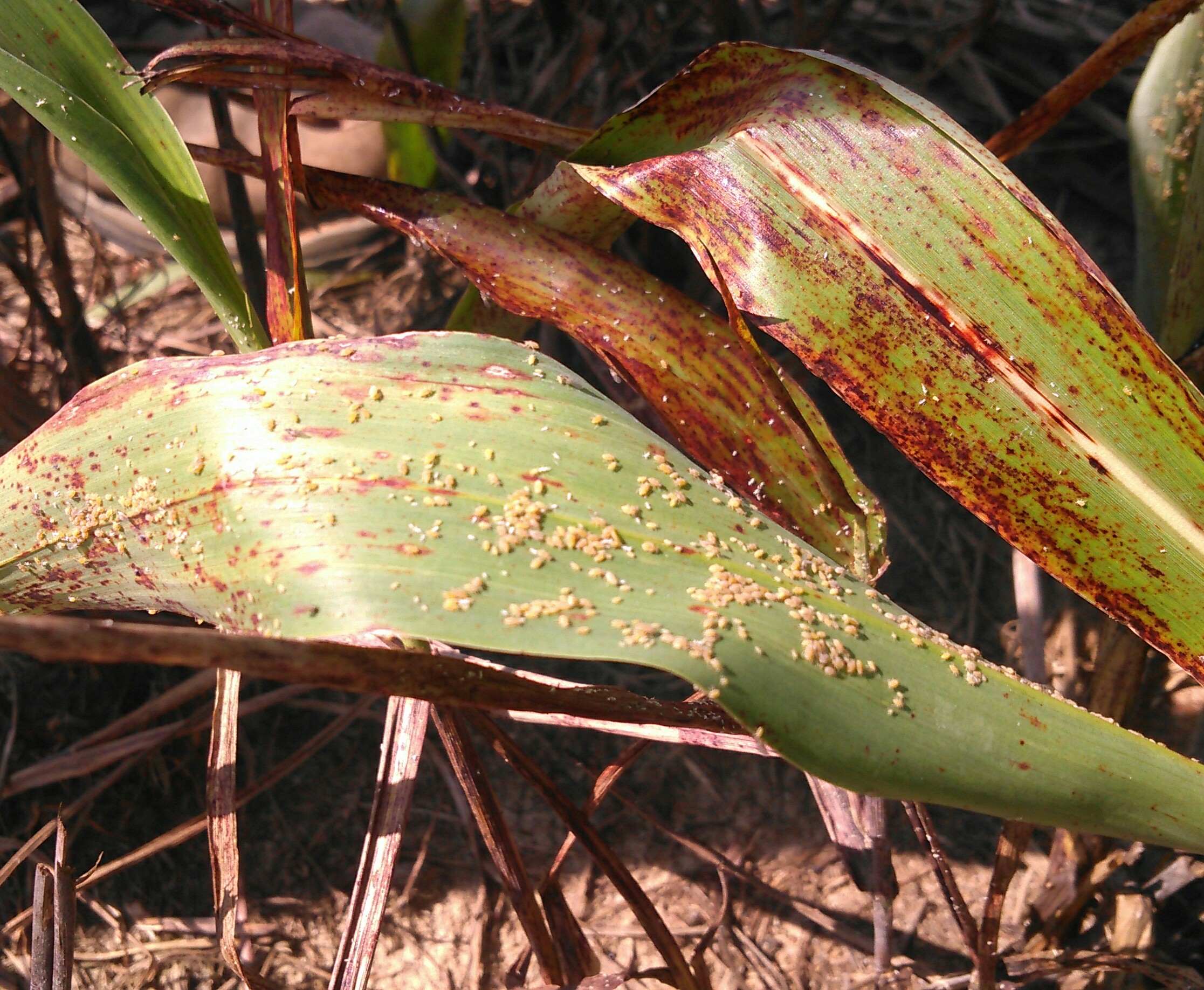The sugarcane aphid, Melanaphis sacchari, has been very active this summer in Northwest Florida. Typically, we are talking about grain sorghum when we warn about this pest. However, the pest was found to be significantly damaging forage sorghum in Okaloosa County.
Control measures are very limited. Recently, an appeals court revoked EPA’s approval of sulfoxaflor, that has been the most effective for controlling sugarcane aphids in the Southeastern US.
A good option for 2016 may be to simply avoid the problem by planting pearl millet instead. Pearl millet is similar in yield and palatability to forage sorghum, but is largely unaffected by sugarcane aphids.
Pearl millet can be planted into prepared seedbeds in March-June. It will germinate when soil temperatures reach 68 degrees or higher. The planting rate is 12-15 lb/acre if drilled and 30-40 if broadcast. The most efficient grazing strategy is to begin grazing at 20-25 inches and stop at 6-8 inches. Apply fertilizer and allow regrowth. The recommendation for fertilization of pearl millet pastures is to apply 30lb of N/acre, half of the recommended K2O, and all of the recommended P2O5 after emergence. After the first grazing period, apply 50lb of N/acre and the other half of the recommended K2O. Then apply 50lb of N per acre for each of the following grazing periods.
Pearl millet is also a safer forage for cattle and horses, because it will not accumulate prussic acid, as sorghums can during drought stress or following a frost.
For more information about growing Pearl Millet as an alternative to forage sorghum, please see the following UF/IFAS publication:
Pearl Millet (Pennisetum glaucum): Overview and Management
- 2023 WFREC Crop Variety Trial Results - February 2, 2024
- Hoof Care for Florida Horses - July 28, 2023
- Targeted Nutrient Management for Fruits and Vegetables - February 3, 2023

